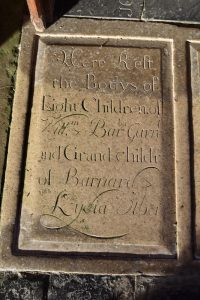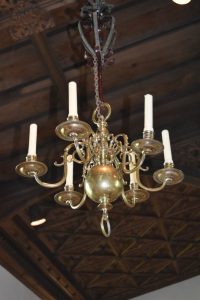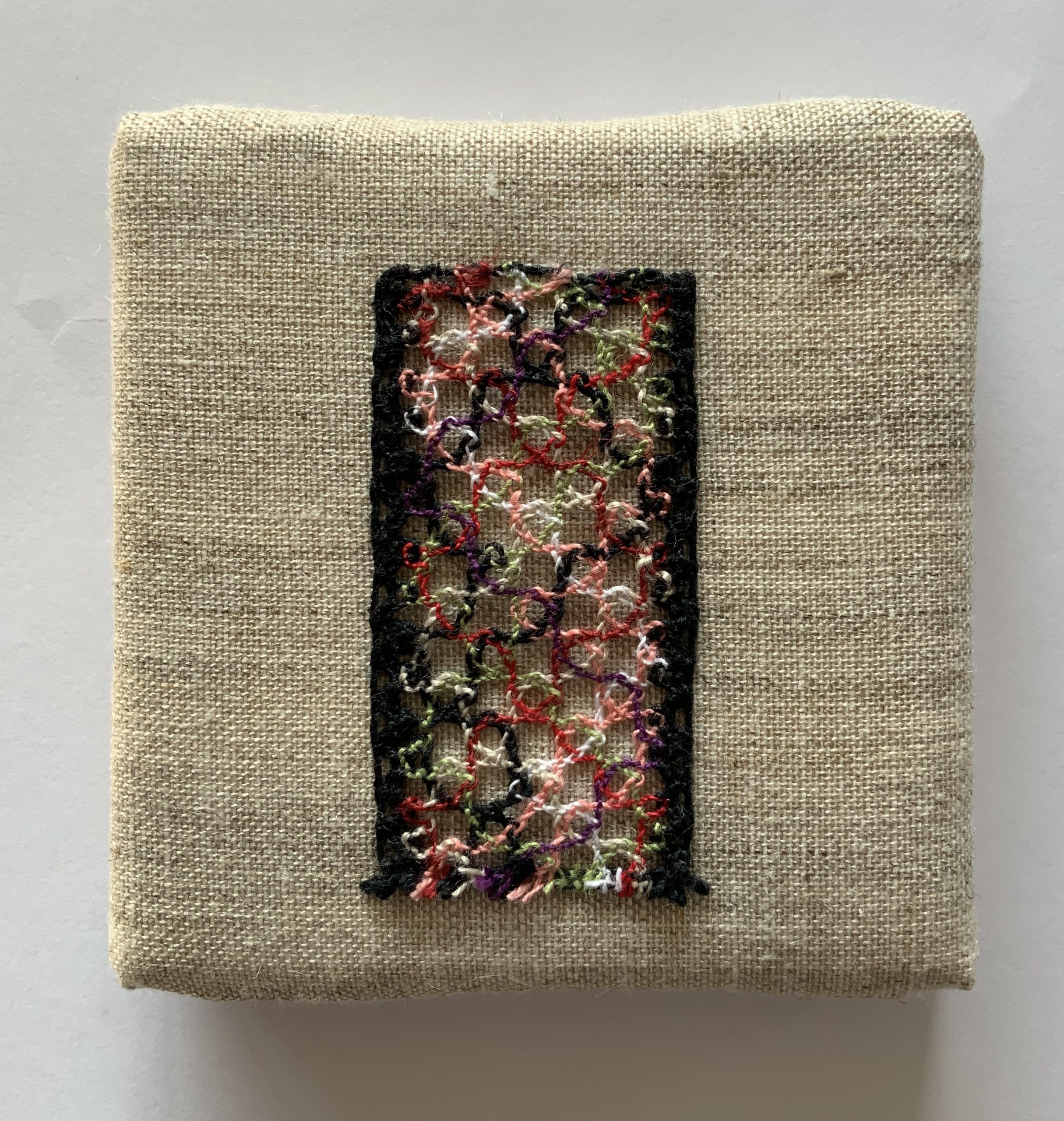Here are close up shots of the seven ‘memories’ of the churches (this includes Cley) and a short description of why they formed personal connections to me.
N.B. I have now added the ‘revised’ versions of the ‘memories’ as made for the Common Land exhibition held in Salthouse church in September 2021. The new versions are all 10 x 10 cm.
Cley

In the north aisle at Cley there is a series of memorials to the eight children of a presumably well-to-do family who died in infancy. My own paternal grandfather was one of only two surviving children of a Methodist family of eight in Great Yarmouth: I have their names and their so brief dates on a torn out page from an old family bible but no other information. I do not know where they are buried.

Blakeney
I have a long-standing affection for Sweden so was very surprised and pleased to find a stained glass window to St Bridget, a saint closely associated with that country, in the church. I was also attracted to the typical use of swirling designs in the Victorian glass and to the vibrant colour against the lead. It was a reminder that churches for much of their history were full of colour, not the plain walls that we usually see today. The ‘memory’ includes an embroidery frame – an acknowledgement of the skill of the Victorian makers.

Wiveton
Wiveton church is modest and none the worse for it. However there is also an eye-catching organ, again a part of Victorian renovations and ‘improvements’. This ‘memory’ is an interpretation of a single element in the decoration of the organ which was made for the Great Exhibition of 1851. The design has double resonance for me – not only does it remind me of the boteh (paisley) shape that was ubiquitous in the nineteenth century, and which I saw so often in hanging an exhibition of Norwich shawls and contemporary textile works sourced from them that was held in the Norwich Cathedral Hostry in Autumn 2016, but also it is a decorated bass clef. It is the deep bass notes of the organ that I am stirred by.
Glandford
Glandford church can still be lit by candlelight. This ‘memory’ recalls the globes of each candelabra that catch what light there is. The candelabra makes me think of the Arnolfini double portrait with its Dutch version – a reference to my research in the History of Art.
Langham
Another piece from stained glass: this time a window designed by Burnes Jones. It was the colours that I responded to, particularly those that I do not associate with earlier stained glass like the purples and bright greens. They seemed to set off the reds wonderfully. I did know that the window was there but was impressed by its beauty when I saw it in situ. However, I failed to get a good image!
Kelling
Another very modest Norfolk church yet a part of an affluent estate. It was the colour over the altar in a very simple structure that I remember and associate with the Italian ceilings of painters such as Giotto. The day we walked to Kelling had a bright blue sky so this colour in the church seemed very appropriate!
Salthouse

Maybe the most complex of the ‘memories’? In the church lies a memorial to Robert Stanforth who died on 22nd November 1751. He was 24. It was the words ‘much lamented’ that caught my attention together with the date – St Cecilia’s Day. I decided to make a ring of connections drawing from the walk, my personal experience of poetry and music and how I think in colours. So, the links in the chain are (starting from the top) – sky blue – memorials and memories – ‘To a Skylark’ by Shelley – the word ‘Relict’ for a widow, deep mourning – ‘The Lark Ascending’ by Vaughan Williams – ‘much lamented’ – St Cecilia and the joy of music – 22nd November and Benjamin Britten’s ‘War Requiem’ – his ‘Flower Songs’ and the flowers along the walk – the slate of the memorials – the coast and Aldeburgh – lost at sea – rough seas – Norfolk graveyards in stunning surroundings.
For the ‘revision’ of 2021, I reworked this ‘memory’ as a piece of bobbin lace, with the design taken from the ancient rood screen which is now sited at the rear of the nave. The marks of the years are so evident, as is the destruction of the images which presumably took place during the Reformation or the Civil War.
















